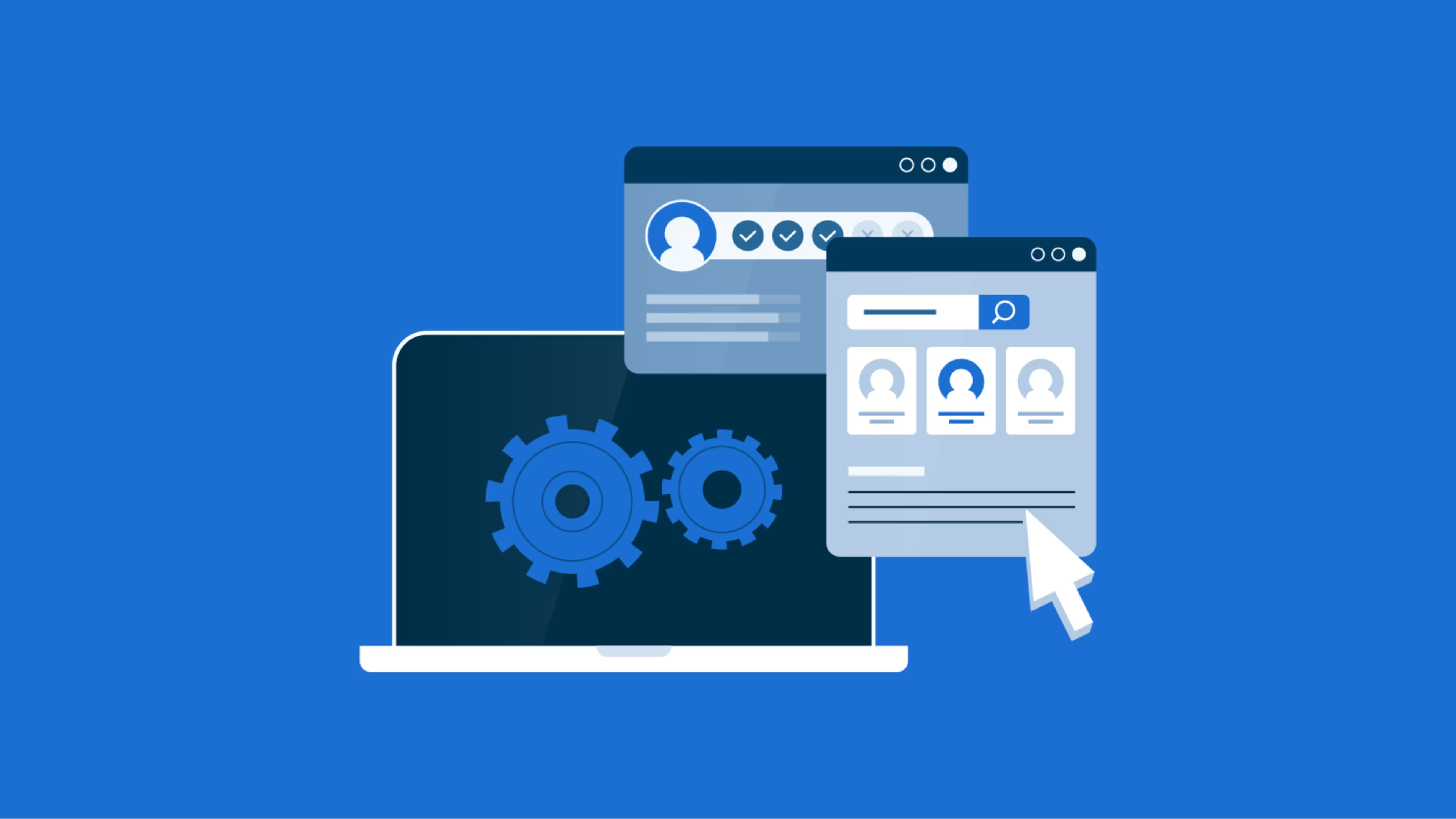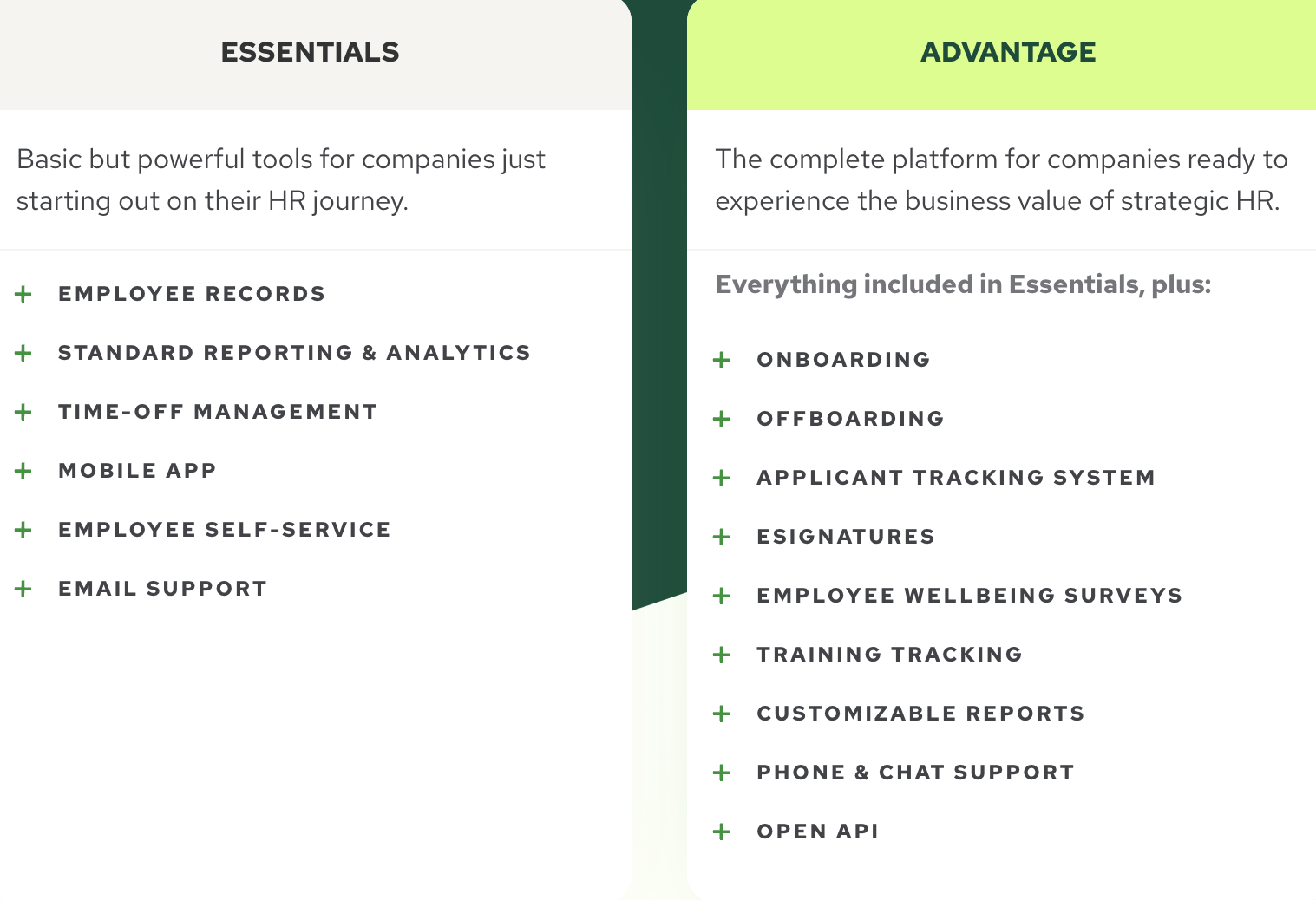Consolidating HR systems to eliminate redundancies can save money and boost efficiency, but the process can be tricky.
As small and midsize businesses (SMBs) seek to cut costs and improve efficiency heading into a likely recession, HR departments are taking a critical look at their current HR software stacks. And what they’re discovering leaves a lot of room for improvement.
That’s according to Capterra’s 2023 HR App Sprawl Survey*, which finds that despite only using an average of five software systems for all of their company’s HR needs, HR employees say 50% of those systems perform overlapping functions.
Besides driving up costs, redundant software applications introduce security concerns and hamper productivity. Consolidating systems will solve this problem, but with locked contracts, the painful data migration process, and even employee system preferences standing in the way, it won’t be easy.
In this report, we’ll analyze our survey results to better understand what these HR software redundancies look like and the problems they can cause. We’ll then offer tips on how you can avoid excessive overlap and successfully consolidate your company’s systems to arrive at a lean, mean HR software machine.
/ Key findings
Payroll, applicant tracking represent the biggest overlap: Payroll (69%) and applicant tracking (68%) are the most frequently cited HR functions to have redundant software applications.
One-third of HR software applications don't get regular use: On average, HR employees say they only use around two-thirds (66%) of their HR software systems on a regular basis.
HR software consolidation is coming: 83% of HR employees say their company has plans to consolidate software applications within the next 12 months.
HR software stacks have a redundancy problem
To understand why HR software redundancies are so common, it helps to look at a typical HR software journey.
When a small business is formed, the company needs to do necessary HR tasks for their handful of employees such as tracking attendance and doing payroll. Some may start off by hiring a service provider for these needs, but eventually payroll software becomes a necessity. That’s one. As the business grows and increases hiring, some type of applicant tracking system becomes a must-have. That’s two.
Over time, the HR department will attempt to squeeze all the value they can out of their payroll system (using features like time-tracking and benefits administration, if they’re included), but will inevitably want more advanced functionality and reporting. So they integrate the payroll system with a more comprehensive human capital management (HCM) or talent management suite. That’s three.
Between these three systems, the company’s HR needs are mostly covered. But over time, some modules in the HRMS or talent management suite won't be as fleshed-out as the HR department wants, so additional tools are purchased that excel at specific strategic functions. Maybe it’s a learning management system (that’s four), and/or an employee engagement platform (that’s five).
According to our survey data, SMBs tend to stop around here, as respondents from both small (1-100 employees) and midsize businesses (101-1,000 employees) say they use five different systems for their HR needs, on average. The end result is an HR software stack loaded with everything a company could need, but also riddled with redundancies—most often in payroll (69%) and applicant tracking (68%).
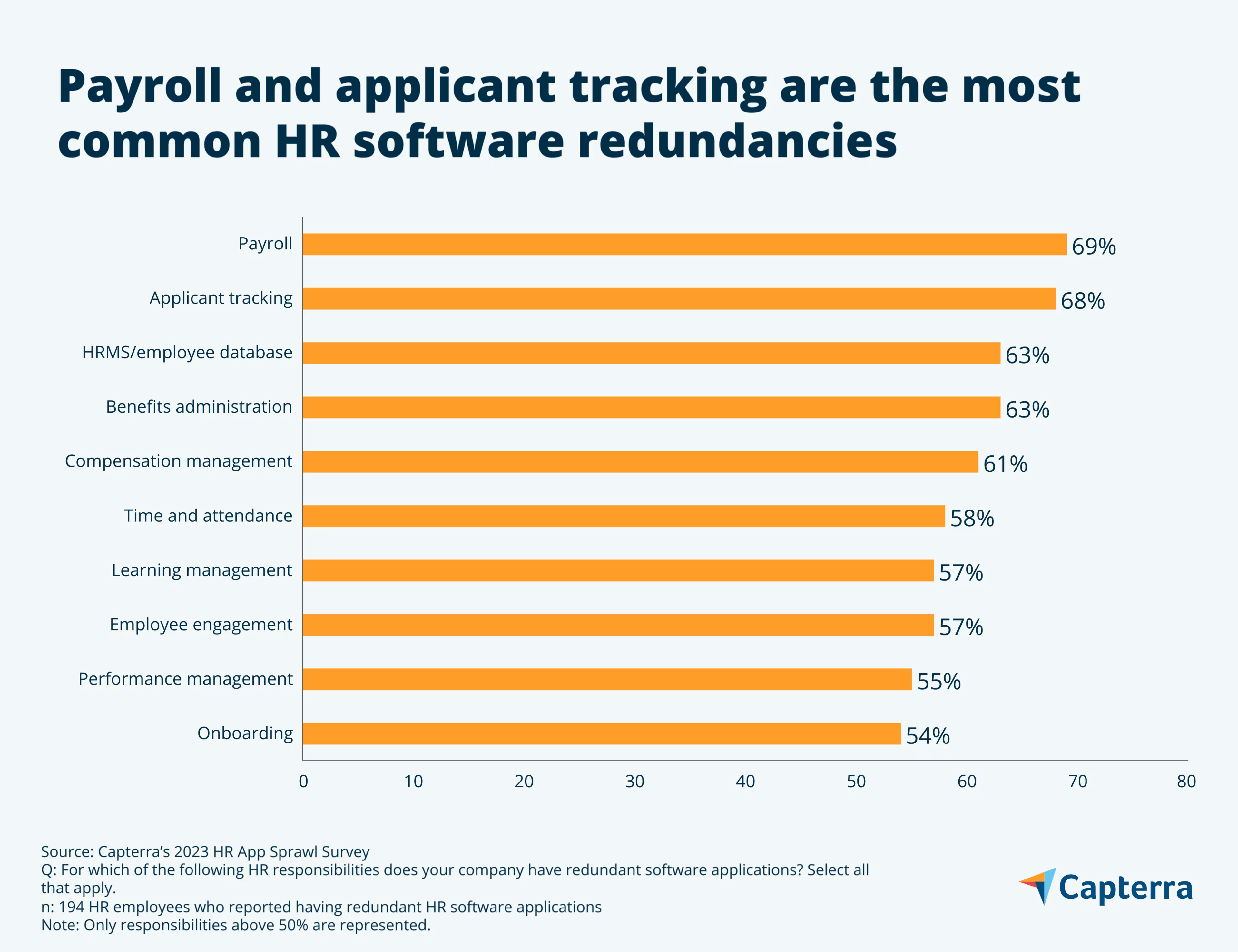
Not only do redundant HR applications represent dead weight and unnecessary expense, but HR employees dealing with these overlapping software systems say they present additional challenges:
More time spent learning how to use new applications (cited by 48%): Instead of only needing to learn the ins and outs of one tool that houses all the HR functionality they need, HR employees have to familiarize themselves with multiple tools that have different features, interfaces, and quirks.
Switching between apps tanks productivity (cited by 47%): HR employees need to be able to switch between different tools that support different HR functions quickly, but oftentimes they have to log in to a new system to switch gears on the job instead of staying within the one they’re already using. As a result, 42% say redundant applications have increased the time they spend on day-to-day tasks.
Redundancies introduce security or privacy concerns (cited by 46%): The more software systems a department has, the more access points that can be hacked for nefarious purposes. There’s also the matter of ensuring sensitive employee data is protected as it’s moved or duplicated across different software systems.
Respondents say overlapping applications don’t provide much benefit either. Only 38% of HR employees in our survey say that redundant apps have increased ROI on company software investments, and even fewer than that (31%) say redundant apps have increased efficiency.
Why software consolidation is easier said than done
The solution to so much functional overlap is obvious: Consolidation. There are a number of good HR software suites on the market that consolidate every HR function a company would need into one system, allowing HR departments to dump standalone tools, eliminate redundancies, and achieve economies of scale with a single vendor. Most companies plan to go down this path soon, according to our survey.
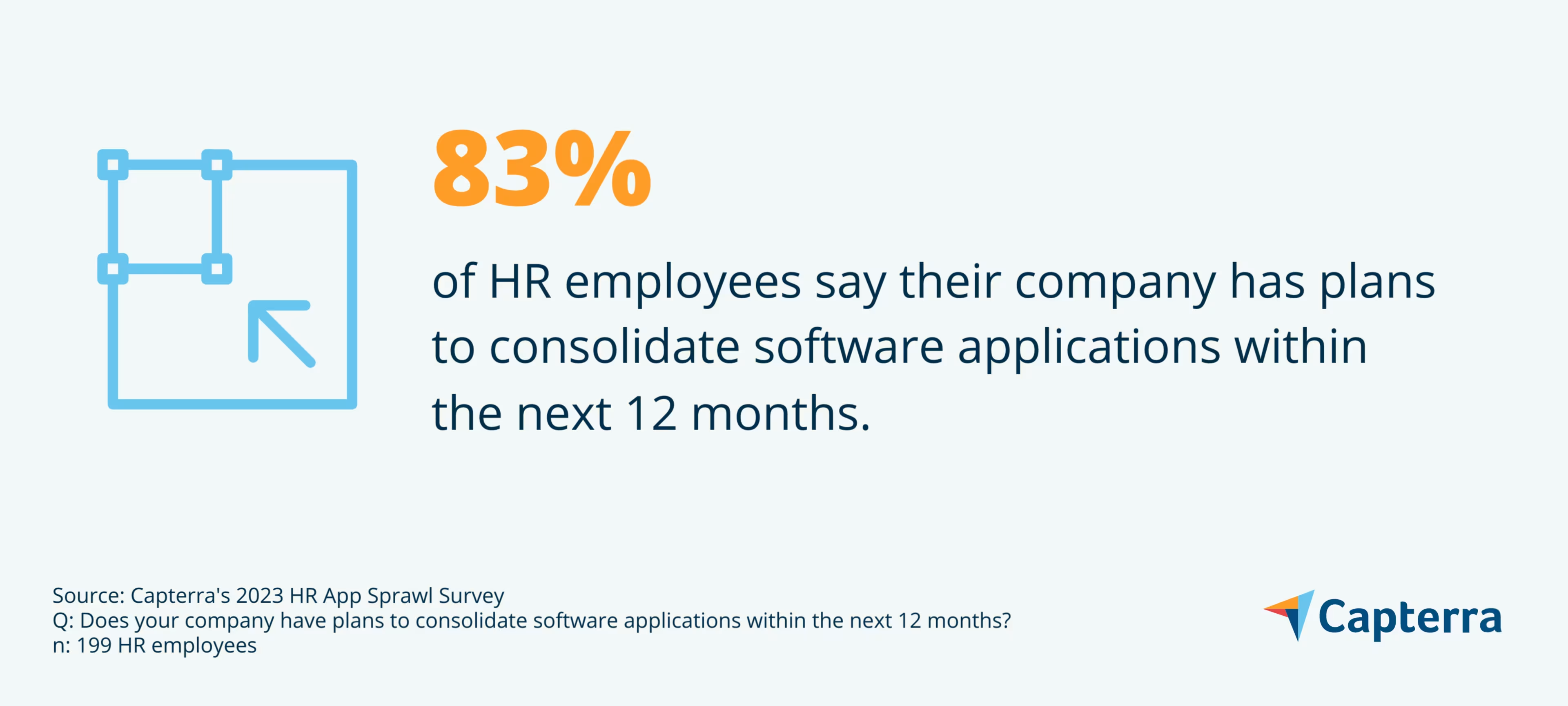
But a number of obstacles can turn a seemingly simple consolidation effort into a major headache.
For one thing, consensus on which applications to keep and which one to get rid of isn’t always clear cut. The top reason their company has maintained overlapping systems to begin with, according to 60% of surveyed HR employees, comes down to supporting employee preferences.
So while having an all-in-one HR software suite eliminates functional overlap, it’s going to be hard from a user preference standpoint for it to compete with a best-of-breed system that’s been in place longer, and designed to do a single function extremely well. In other words, employees are going to put up a fight to keep the system they know and love.
Migrating data to a single consolidated system is also an issue; so much so that more HR employees in our survey (52%) cite the complexity or cost of data migration as a barrier to application consolidation than any other reason. Not only can data be lost in translation, but companies may not be able to afford a lot of downtime to get a consolidated HR stack up and running. And because HR software systems affect every employee (especially systems that rely on employee self-service), data consolidation efforts within an HR software stack can be a particularly dangerous minefield.
And finally, there’s the dragged-out process of actually getting rid of software that’s no longer in use. Between getting approvals from stakeholders, waiting for contracts to end, and making the migration over to another tool, 68% of respondents say it typically takes at least four months at their organization for a software system that’s no longer useful to be fully removed. Eleven percent say it takes over a year.
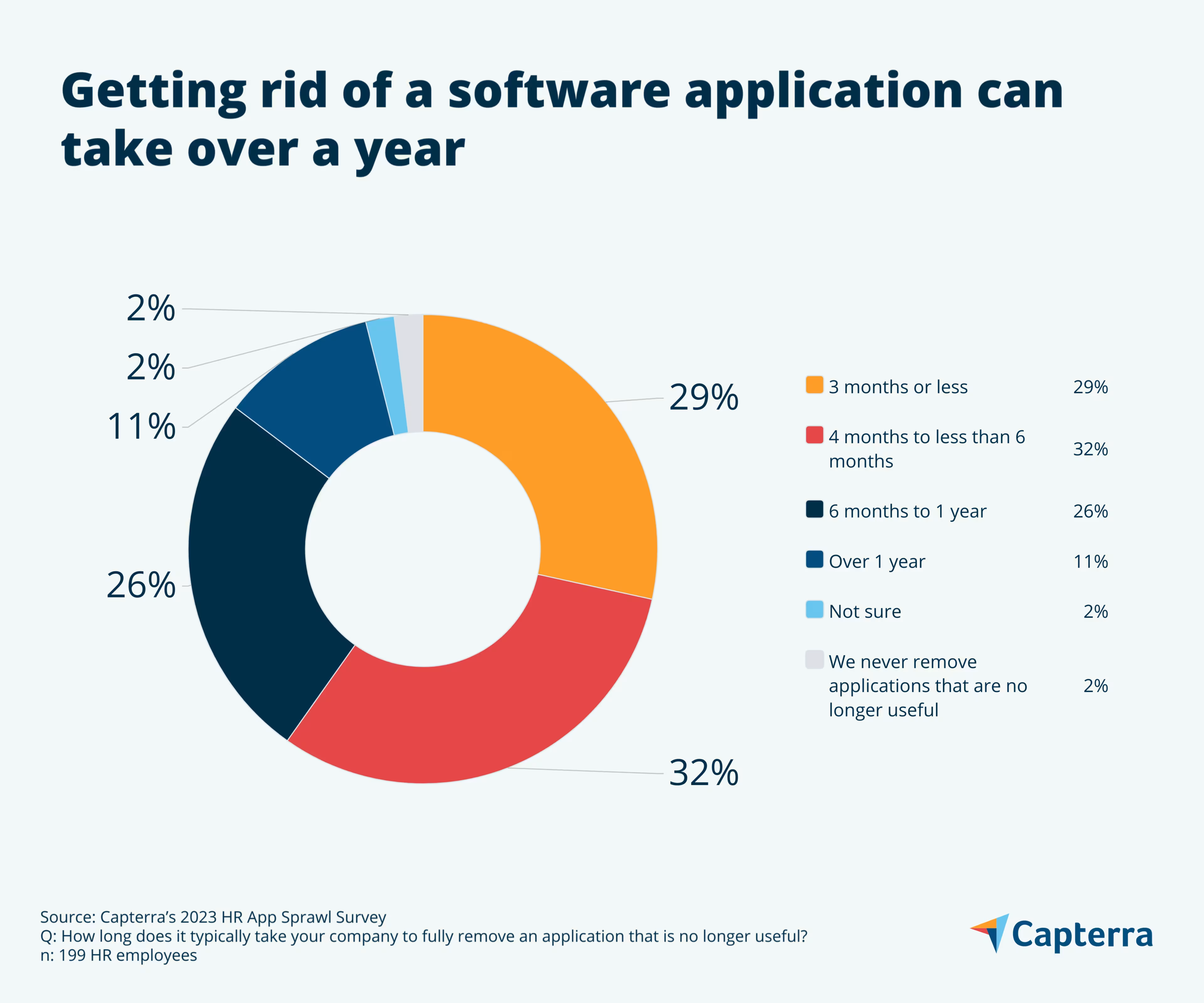
Daunted by the process, companies often avoid fully eliminating old systems and consolidating. In our survey, only 28% of HR employees say their company has formally retired software they do not need or use.
4 ways you can prevent or reduce HR software overlap
Too much HR software overlap can eat away at IT budgets and create problems for years to come. To help, here are a few tips that can prevent HR software redundancies from getting out of control before they happen, or to make consolidation efforts after the fact not as painful.
1. Implement policies to mitigate “app sprawl”
App sprawl, also known as software sprawl or SaaS sprawl (in the case of cloud-based apps), occurs when a company continuously adopts new technologies without removing old ones. It’s a problem that affects most organizations and contributes to HR software redundancies, as 64% of HR employees in our survey say their company is at least slightly impacted by app sprawl. We also find that midsize businesses are twice as likely to be severely impacted by app sprawl compared to small businesses (12% vs. 6%), indicating this is a problem that gets worse over time as companies continue to implement new tools.
Policies should be established and trained on to ensure new software is only implemented as-needed and -authorized, but we find this doesn’t happen as often in a lot of organizations.
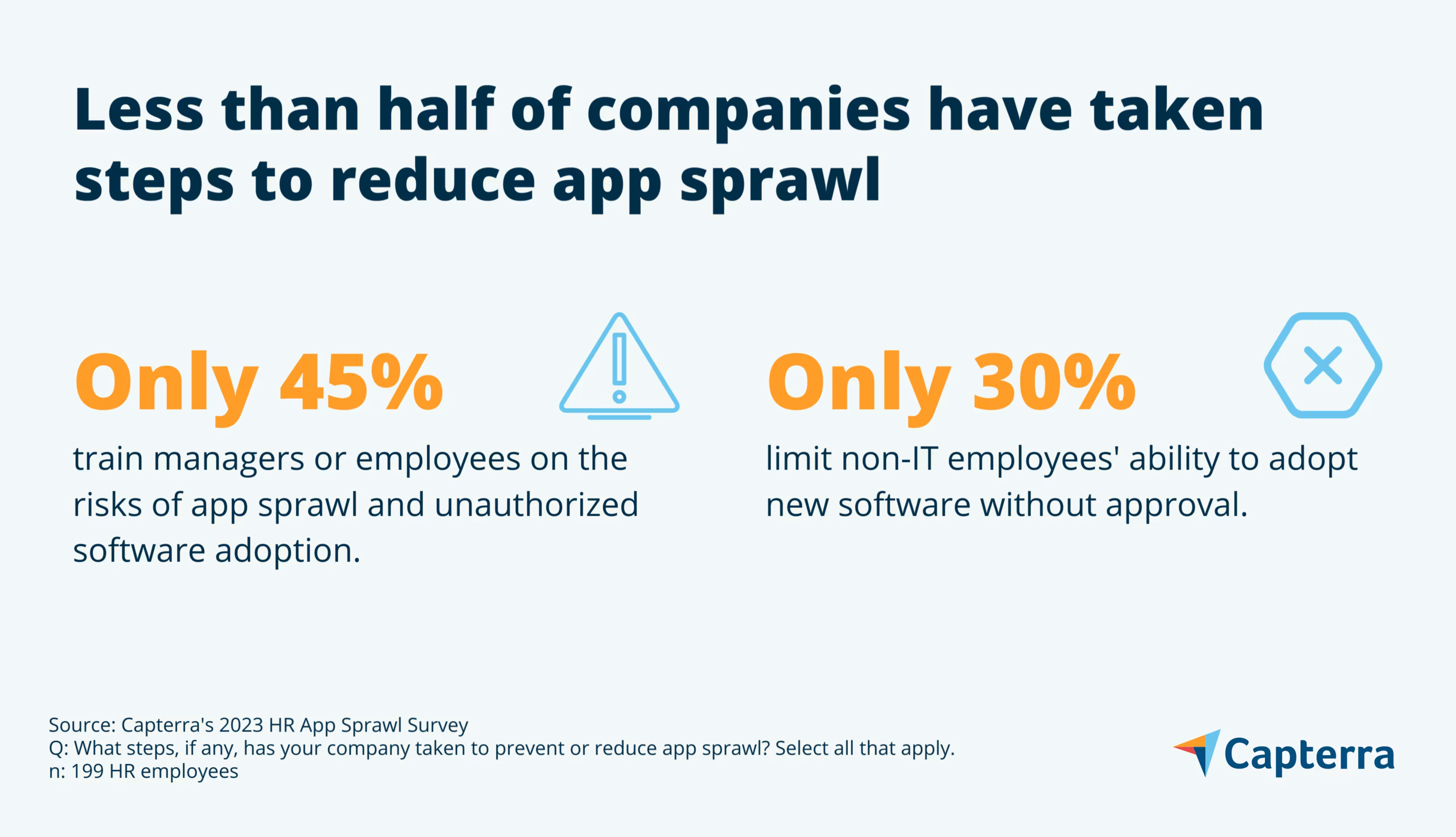
In small businesses especially, where employees have less oversight, it’s important to take the time early on to establish rules for software adoption before app sprawl gets out of control.
2. Remove red tape on sunsetting old software
At the same time that app sprawl is exacerbated by companies making it too easy to purchase new tools, it’s also made worse by companies making it too hard to fully get rid of old ones.
Before software that is no longer useful is removed, close to half of surveyed HR employees say they have to consult with various business units to determine potential impact (47%), consult end users (47%), and carefully consider potential data ownership or migration issues (45%).
While these are all important issues to address, having too many stakeholders giving input or needing to approve software removal drags out the process unnecessarily. In most cases, one IT manager and one HR manager—with a quick email to other department heads asking if a tool is still important—is all that’s needed to move forward.
3. Keep a running inventory of your HR software stack
Despite 85% of companies in our survey having performed a software audit at least once in the past 12 months, only 44% of HR employees say their organization keeps a running inventory of various software applications and subscriptions. Close to one in five (19%) go as far as to say that their company doesn’t know about all of the apps that are owned or used.
Keeping tabs on your HR software stack can not only highlight redundancies and keep IT budgets in check, but also let you know when subscription periods for different systems are coming up—giving you plenty of time to prepare for cancellation and migration.
And for those who really want to keep a close eye on their HR software stack, there’s SaaS management software. Once integrated with various business applications, these tools can monitor software usage and cost, centralize policy management, and enhance organizational data protection. Gartner predicts that by 2027, 40% of organizations using multiple SaaS applications will centralize management using SaaS management software.[1]
4. Check the different pricing tiers of the tools you’ve had for a while
In almost all cases, paywalls are annoying. You mean I need to pay more money to access features built in to a system I already have?
But in the case of software redundancies, tiered pricing structures can actually be a good thing. If, after implementing new HR software, you find there’s too much functional overlap with an old system that you still want to keep, you may be able to move down to a more affordable pricing tier that eliminates some of those now-redundant functions.
This one is a long shot, but it also takes minimal effort.
Standalone or suite, we have you covered
While all-in-one HR software suites can eliminate redundancies, standalone tools still hold a lot of value in the HR tech stack thanks to their best-in-class functionality. Ultimately, some overlap in functionality is unavoidable, and HR departments will need to decide how much overlap is worth it to arrive at the best HR stack for their needs and budget.
All that to say, whether you’re looking for a comprehensive talent management suite to bring things together or a standalone HR tool to fill a niche functionality need, head to Capterra’s HR software directory. There, you can compare top products, read reviews from real users, and make a more informed purchase decision.
Note: The application shown in this article is an example to show a feature in context and is not intended as an endorsement or recommendation. It has been obtained from sources believed to be reliable at the time of publication.
